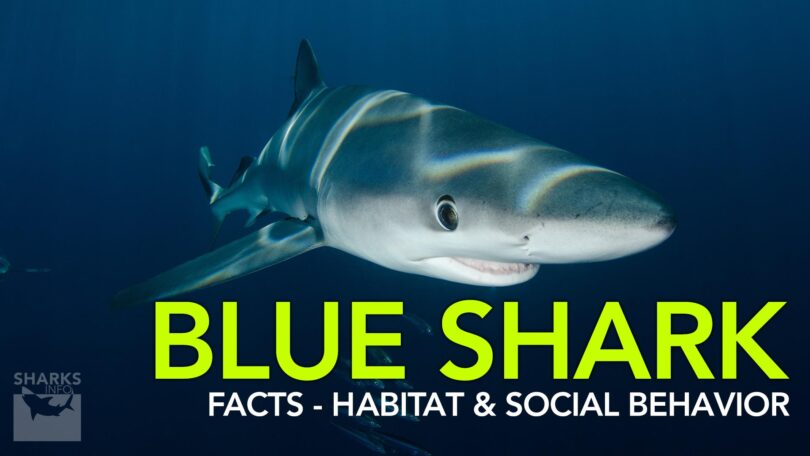Blue sharks, scientifically named Prionace glauca, commonly known as the Great Blue sharks are a pelagic species that belongs to a group of requiem sharks of the family Carcharhinidae. The main adaptation of these species is found in the extreme depth of ocean waters. As the name indicates, the blue coloration of the sharks is the reason behind their unique name. This article covers the major aspects of the survival strategies of the Blue shark.
What Habitat Do Blue Sharks Inhabit?
Blue sharks prefer to live in the deep colder regions of the tropical and temperate zones. As these species are epipelagic thus are found almost all over the globe. Blue sharks prefer a water temperature ranging from 7 to 25 oC to thrive. In tropical waters, these species inhabit a depth of 350 meters or 1.100 feet or even more.
Physical Appearance of Blue Sharks
These sharks are dark bluish from the top whereas pure white from the underside. The color of these sharks helps them to camouflage with the surroundings and protect them from any kind of danger. They have a slender body, large conical snout, large eyes, pointed pectoral fins, elongated caudal fins, and moderate size dorsal fins located closer to the pelvic fins. The upper teeth are triangular and are 14 in count whereas the lower jaws are equipped with 13 to 15 serrated teeth. The Blue shark has a maximum length of 10 feet and is around 400 pounds heavy.
Diet Of The Blue Sharks
The diet of Blue sharks consists of:
- Squids
- Small sharks
- Anchovy
- Sardines
- Herring
- Carrion
- Hake
- Lobsters
- Shrimps
- Crabs
- Sea birds
- Cod
- Octopuses
- Schooling fish
- krill
- Cuttlefish
What Are The Predators Of The Blue Sharks?
The predators of the Blue shark are:
- Killer whale
- Shortfin mako shark
- Great white shark
What Is The Reproductive Mode Of Blue Shark?
Blue sharks follow the viviparous mode of reproduction under which they give birth to live pups. After the long gestation period of 9 to 12 months, the mother gives birth to 25 to 50 pups typically but astonishingly, the sharks give also birth to 135 pups at one time ever recorded. Females become mature at the age of 6 whereas males reach sexual maturity when they are 4 years old. At the time of birth, the young are 0.35 to 0.5 meters and are expected to live for 20 years.
What Social Behavior do Blue Sharks exhibit?
Blue sharks exhibit a migratory behavior, they are mostly found traveling in the form of school. These are very agile swimmers which travel a long distance in search of food. The Blue shark actively hunts in the early morning or at night hours, especially near the shoreline where food is abundantly available.
What Is The Conservation Status Of The Blue Shark?
Blue sharks are very popular among the fisheries, especially for their fins, skin, meat, and liver oil. The bycatch of these species covers a major portion of the total shark catch in a year. Not only for fins, but these species are also one of the favorite and attractive game fish. Globally, the shark is one of the most exploited sharks and an annually 20 million of fishes have been caught each year, especially in the Asian markets probably for the fins. The rapid decline in the pollution of these sharks ranks them as a Near Threatened species in the Red list of IUCN.
Interesting Facts About Blue Sharks
- The vivid coloration of the Blue shark allows them to camouflage with the environment.
- The male Blue sharks get mature earlier than the female sharks.
- They are the species that fall in the category of the non-filter feeder.
- In captivity, Blue sharks have a life span of 8 years.
- These species are considered non-aggressive and exhibit friendly social behavior but attack only when provoked.
Final Verdict
Blue sharks are the species of requiem family, distributed all over the globe, and prefer to live in the extreme depth of 350 meters or even more. The bluish color of the sharks provides them with a countershading capability which allows them to merge with the surrounding. In some scenarios, the Blue sharks give birth to about 135 pups in a single breeding season. However, the extreme bycatch of the Blue shark ranks them in the Near Threatened category by IUCN.










